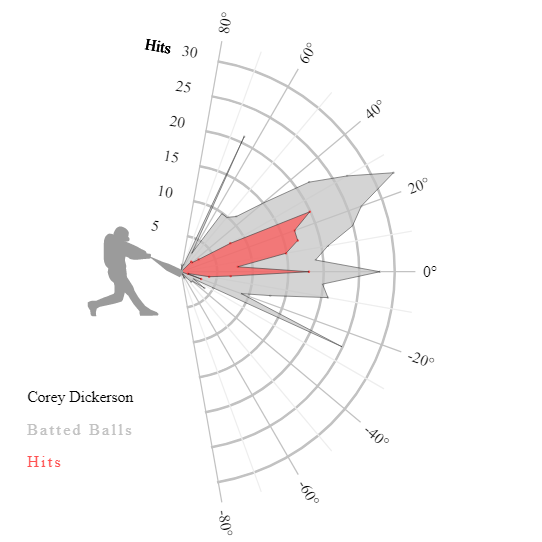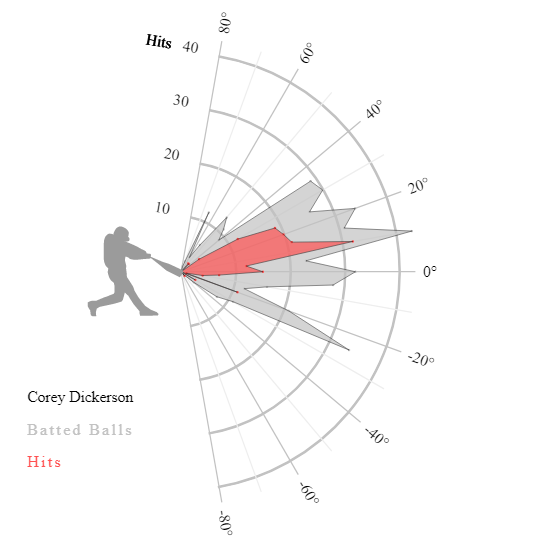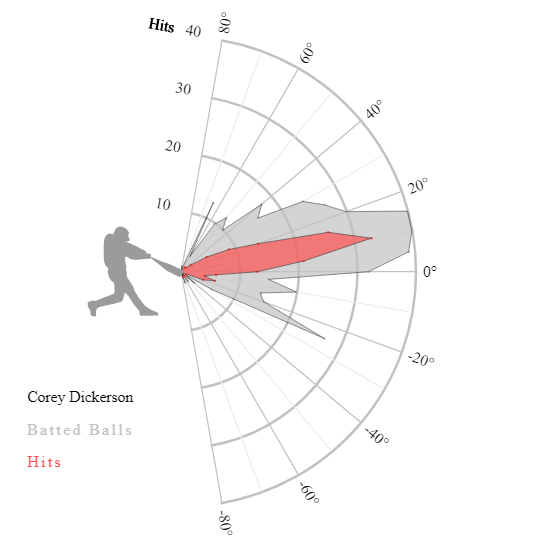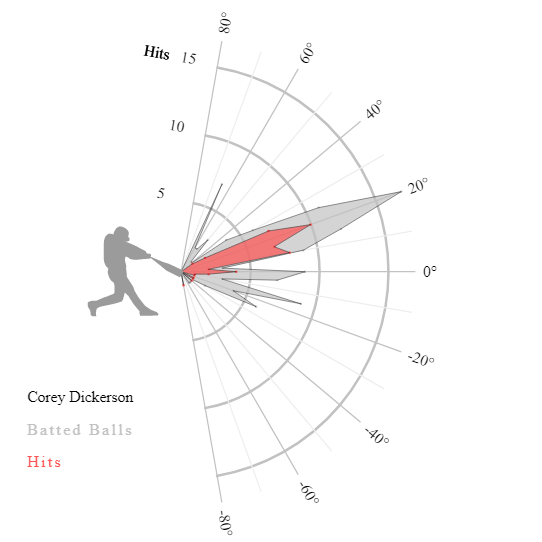The year was 1998. Being all of 12 at the time, I had just entered the eighth grade, and a television phenomenon known as Toonami had taken over my life.
Most ’90s kids know exactly what I am talking about. Every morning, I’d set my VCR to record the entire day’s worth of programming. After wrestling practice, I’d race home and dive right into my favorite shows including Gundam Wing, Batman: The Animated Series, and Ronin Warriors. One show though stood out above the rest to my soon to be angsty brain, and that was Dragon Ball Z.
Simultaneously the coolest and strangest show I had ever seen, it was a constant barrage of yelling, action, and constantly escalating superpowers. I refused to miss a single episode. Eventually, after hundreds of episodes and many spinoffs, the show ran out of ways to power up its characters on their own, so it invented the concept of fusion, in which two of the characters could merge to create one super-powered character.
This is relevant, I promise.
They’d do this crazy little dance, and then, poof! You ended up with one unstoppable bad mama jama hero. It seems silly and implausible, right? Except I think that’s exactly what has happened to Corey Dickerson this season with one simple twist. It appears in 2019 that Dickerson has fused with a past version of himself to form the hero we need, if not the one we deserve.
In 2017, Dickerson was a solid power hitter with the Rays, putting up a .282/.325/.815 line with 27 home runs (17.2 HR/FB%) and a 115 wRC+, while in 2018, he shifted gears with the Pirates, sacrificing power for average and producing a .300/.330/.804 line with a mere 13 home runs (8.7 HR/FB%) and the same 115 wRC+. We’ve seen this player before in fantasy: elite at different things but never multiple things at the same time. We wait patiently for these players to put it all together, and they never do.
Except for this year. It appears that it might have happened for Dickerson, as through 171 plate appearances (he missed about half the season because of a posterior right shoulder strain) with the Pirates and the Phillies, he has looked like the fusion hero we’ve always wanted him to be as he’s posted a .316/.363/.943 line with seven home runs (14.3 HR/FB% and a 135 wRC+). Suddenly, Dickerson is hitting for both power AND average! Of course, the question is: Can we trust what we’re seeing so far?
It’s not a huge sample but relevant enough. I hope that if we dive a bit deeper we can hopefully determine how much faith we should put in this new and improved Dickerson. To do so, I want to draw two comparisons:
- First, I want to draw the comparison between his years with Rays, the years with the Pirates and Dickerson’s 2019 numbers
- Then, I think it would be useful to compare his 2019 numbers with the Coors Field years and see if there are any similarities to found there.
Once we’ve made the comparisons, I think it worthwhile to discuss his recent trade to Philadelphia and what effect it has had on his counting stats and fantasy viability. Then we should have an idea as to whether we should be scooping up Dickerson for the rest of the fantasy season.
I think it’s worth starting with Dickerson’s advanced stats. Beginning with the past few years let’s dive right in:
| Year | Team | BB% | K% | ISO | BABIP | wOBA | wRC+ | Contact% |
| 2016 | Rays | 6.0% | 24.5% | .224 | .285 | .319 | 101 | 73.3% |
| 2017 | Rays | 5.6% | 24.2% | .207 | .338 | .341 | 115 | 73.6% |
| 2018 | Pirates | 3.9% | 15.0% | .175 | .333 | .341 | 115 | 80.4% |
| 2019 | Pirates/Phillies | 7.6% | 18.1% | .265 | .350 | .378 | 135 | 74.5% |
I see a pattern emerging here. Let’s go step by step. We see a pretty steady walk rate during his Rays tenure, but then it drops precipitously during his year with the Pirates. At first glance, that would seem troubling, but it’s worth noting that his contact rate skyrocketed 6.8% that season and could go a long way toward hiding any gains in his plate discipline he made in that time. More on this when we get to plate discipline as a whole.
My suspicion is Dickerson started seeing the ball better in 2018 but the improved plate vision manifested itself in the improved contact rate because he wasn’t getting as deep into counts.
We see this effect carry over into his strikeout rate. Again, we see a remarkably steady rate in 2016 and 2017, and then it plummets in 2018, only this time it’s a good thing! Finally, in 2019, it bumps back up a little. Just like with walk rate, I feel like the improved contact rate last year was obscuring the underlying improvements that Dickerson was making in 2018 to his plate vision. My hunch is that 2019’s 7.6% walk rate and 18.1% strikeout rate are more direct representations of his actual plate vision than his time with the Rays or the Pirates, especially because his contact rate is back down 5.9% so far this year.
His ISO follows much of the same pattern. Often when a player focuses on making contact more often, it can sap his power a little bit until he wraps his head around the process, which I think is what we saw in 2018 to a degree. This seems to track when you consider that his splits in ISO in 2018:
| Half | ISO |
| First | .169 |
| Second | .194 |
This may be conjecture, but it looks like Dickerson’s power suffered as he adjusted to the new park and new approach, but in the second half, he seemed to figure it out as that ISO got right back to where it had been the year before. It doesn’t surprise me then that his ISO has skyrocketed as he merges his new skills with his previous power output.
wOBA and wRC+ are pretty self-explanatory in this situation. He’s hitting well, and the numbers reflect it. The last number in that first table I want to look at is his BABIP. Given how close his 2016 and 2017 BABIPs are, they likely represent a decent baseline for his BABIP-related skill set. Yet if that is the case, should we be concerned that Dickerson’s growth this season is all a result of good luck? Perhaps some, but I think some other things are going on here.
His 14.0% infield-hit rate is nearly double his figures from 2017 and 2018. Because he has seven infield hits on the season, what would his numbers look like if we cut that number down to four hits, just over half that number? It would knock his average down to .297, which falls right in line with his previous season’s numbers batting average numbers.
So there is some luck in play, but if that means he simply regresses to his previous elite average ways WHILE retaining his power (it’s important to note that home runs do not affect BABIP as they are not considered balls in play). There’s also some evidence that his improved hitting might support a slightly elevated BABIP as we’ll see in just a moment.
First, though, I want to quickly make the same comparison but with his Coors years (2013 – 2015):
| Year | Team | BB% | K% | ISO | BABIP | wOBA | wRC+ | Contact% |
| 2013 | Rockies | 7.5% | 19.2% | .196 | .307 | .355 | 95 | 81.1% |
| 2014 | Rockies | 7.7% | 21.1% | .255 | .356 | .399 | 140 | 77.3% |
| 2015 | Rockies | 4.3% | 23.9% | .232 | .367 | .367 | 121 | 76.6% |
| 2019 | Pirates/Phillies | 7.6% | 18.1% | .265 | .350 | .378 | 135 | 74.5% |
When I saw this, I got excited. His advanced stats look an awful lot like his Coors days, back when members of the fantasy community (myself included) were tripping all over themselves to own him. If we can get Coors Field Corey Dickerson in Philadelphia ROS, we are in for a treat. It’s worth noting as well that all of his 2019 advanced stats would best or come close to besting most of their marks from the Colorado years. That’s worth getting hyped about.
Now let’s move on to some Statcast business. First, Dickerson’s base Statcast numbers for 2019 compared with the Rays and Pirates seasons:
| Year | Team | BBL% | Exit Velocity | Launch Angle | HardHit% | xBA | xSLG | xwOBA |
| 2016 | Rays | 11.1% | 89.0 MPH | 17.9 | 38.4% | .233 | .441 | .307 |
| 2017 | Rays | 7.5% | 87.2 MPH | 13.8 | 31.2% | .263 | .452 | .324 |
| 2018 | Pirates | 6.1% | 87.8 MPH | 14.8 | 31.7% | .287 | .454 | .332 |
| 2019 | Pirates/Phillies | 8.7% | 87.4 MPH | 14.0 | 35.4% | .263 | .487 | .336 |
Starting with BBL%, it’s nice to see his rate sitting at the second-highest rate in the past four years. Ditto for his hard-hit rate. After his first year in Tampa, his exit velocity and launch angle have held pretty steady, although I want to dig a little deeper into his launch angle because, as you know from my previous work, I’m pretty skeptical by nature of average launch angle numbers becuase they can be skewed pretty heavily by outliers.
That means it’s time for some launch angle charts! First, let’s look at his 2016 chart:

So you can see here the largest spike of balls put into play here are 25 degrees, with secondary spikes at 0 degrees and -25 degrees. Most of his hits are also at the 25-degree mark and 0-degree mark, with secondary spikes at 20 degrees and 15 degrees. This would go a long way toward explaining the 63 extra-base hits he had that year. Now how about 2017?

Here we see a very different chart. The largest batted-ball spike is at 10 degrees, with secondary spikes at 20, 30, 35 0, and -25 degrees. The largest red spike for his hits sits at about 10 degrees, with much smaller secondary spikes at 0, 15, 20 and 25 degrees. This is fascinating when you consider this was his best power season by far since he left Coors. Now how about 2018?

Talk about laser focus. It shouldn’t be shocking that in a season in which Dickerson hit for a 27% line-drive rate that most of his batted-ball spikes and hit spikes are both pretty heavily concentrated between 5 degrees and 20 degrees, which is prime line-drive territory. Now, the thing to note here is the decrease in balls hit above 30 degrees. This would help explain the lack of home runs last year. Finally, we’ve arrived at this year:

It’s easy to see here where much of Dickerson’s success has come from this season. The majority of his batted balls sit between 10 degrees and 25 degrees while nearly all of his hits sit right in that same range. It doesn’t get much more ideal than that. We are talking about a much smaller sample size, but there’s very little to complain about in the above chart. It’s almost as if you took his 2018 launch angles and rotated them upward. It has all the concentrated hits of 2018 with the elevated angles of 2016 and 2017.
It is as if he is combining the two hitter profiles into one. Unfortunately, we lack the Statcast data from his healthy years in Colorado, so we’re unable to compare this data with his Rockies days.
Before we move on to Dickerson’s xStats I want to repost the table from above for easy reference:
| Year | Team | BBL% | Exit Velocity | Launch Angle | HardHit% | xBA | xSLG | xwOBA |
| 2016 | Rays | 11.1% | 89.0 MPH | 17.9 | 38.4% | .233 | .441 | .307 |
| 2017 | Rays | 7.5% | 87.2 MPH | 13.8 | 31.2% | .263 | .452 | .324 |
| 2018 | Pirates | 6.1% | 87.8 MPH | 14.8 | 31.7% | .287 | .454 | .332 |
| 2019 | Pirates/Phillies | 8.7% | 87.4 MPH | 14.0 | 35.4% | .263 | .487 | .336 |
The xStats make pretty clear that Dickerson has always been a player who outperforms his xStats. That’s really useful information, but you know me well enough by now to know that I’m not going to be satisfied with a reason why. I have two suspicions: The first is that the aforementioned infield hits artificially boost his numbers. Infield hits tend to be weak hits, so xStats will register them as poor hits and not count them while for obvious reasons they would count positively towards his batting average.
My second theory is based on the shift. For some strange reason, even though Dickerson goes the opposite way nearly as often as he pulls the ball, he gets shifted on relatively often (nearly one-third of his career at-bats), and that works in his favor. In fact, for his career, when shifted upon, he has gone to the opposite field 28.8% of the time. That can go a long way to explaining his xStats gap.
| Career Hits Against The Shift | Oppo Hits Against The Shift | Weak Hits Against The Shift |
| 73 | 23 | 13 |
23 of his 73 hits against the shift have gone to the opposite field. Of those 23 hits, Statcast classifies 13 of those hits as coming off weak contact. In other words, those are all batted balls that once again would be considered outs by xStats because of their poorly struck nature. Get a few infield hits and a few weak hits that beat the shift every season, and it’s pretty clear how he outperforms his xStats every year, and 2019 has been no exception so far.
It’s become pretty clear that Dickerson always seems to be adjusting his approach and hitting style from year to year. We saw this last year with the dramatic increase in his contact rate, which lead to a career-high 27% line-drive rate and .300 batting average but sapped him of his power. In other years, he has hit for solid power, putting up seasons of 20-plus home runs in 2016 and 2017 while hitting for a lower average. This year, he’s doing both, and there’s pretty good evidence that the growth is legit. His advanced stats seem to have taken the best numbers from both approaches such as a high ISO and better walk rates from the power-only years while retaining the improved batting average and strikeout rates of the contact-oriented years. In fact, in many of those cases, he managed to either set career numbers or come darn close to doing so in most of those advanced numbers. In the end, we concluded we might be seeing an improved version of the Coors Field Corey Dickerson we all used to drool over drafting back in the day.
We see similar evidence in his Statcast numbers, with many of the base Statcast numbers coming pretty darn close to his career highs from the 27-homer 2016 campaign, but they don’t quite tell the whole story. His launch angle charts, though, show how he managed to take the tight grouping of launch angles from the contact years and apply them to a an approach concentrated more on line drives and fly balls. While this has greatly reduced how many of his hits have come from ground balls, it hasn’t reduced his overall hit total (in fact, it has gotten better) and has greatly increased his power output. We’ve also seen how his infield hits and overall approach to the shift could lead to outshining his xStats, which is yet another sign of how complete a hitter he is becoming.
These are all the signs of a hitter who always seemed to be a hitter who used to be able to succeed with only one skill set at a time (power or contact) and now finally has had it all click into place. So far in 2019, he’s excelling at both, and it’s made him a much better hitter, which we see through his elite wRC+ and wOBA numbers so far this year. It’s been a lot of fun to watch him do it.
Before we wrap things up and draw some conclusions, I want to briefly touch on Dickerson’s new team. The Phillies have been batting him in the leadoff spot, and if it continues, that could hold all sorts of possibilities for Dickerson’s counting stats. Even if the Phillies have struggled to score runs (20th in the league), being the leadoff hitter is certainly going to spike his run numbers either way and will lead to a bunch of extra at-bats that will help boost his other stats and impact as well.
It’s also worth noting that his home park just got dramatically better. While I love PNC Park and its aesthetics, it is pretty universally considered a pitchers park while Citizen’s Bank Ballpark is a launching pad. He’s only played two games so far in Philly, but if Dickerson keeps mashing the way he is, he could put up huge numbers ROS.
So what should we expect from Dickerson ROS? The Phillies have 43 games left on their schedule, and that’s a lot of time for Dickerson to do some damage. At his current plate appearance rate that puts him in line for about 141 more plate appearances. Here’s my prediction:
| AVG | HR | R | RBI | SB | 2B |
| .290 | 6 | 25 | 20 | 2 | 14 |
Keep in mind though that if he continues to bat leadoff he could be in line for even more plate appearances. Given his current rate, this means he should hit roughly 40 more fly balls, and if he maintains his HR/FB rate of 14.3%, we should expect five to six more home runs. Again, though, it is important that if he continues to lead off that flyball number could be higher, and therefore I’d tack on a home run or two more.
Add in a roughly .290 to .300 average as I don’t want to bank on him finding quite as much success with the infield hits. With his spot in the order, I would expect solid run production (albeit with poor RBI numbers), and he’ll probably steal a base or two as well. I would call him a near must-add in points leagues, where his doubles will help contribute as well and a solid get in roto.
Here’s the thing though. He’s still really under-owned:
| Fantasy Host | Ownership % |
| Yahoo | 31.0% |
| ESPN | 43.9% |
| CBS | 44.0% |
So he’s out there ripe for the picking, and I feel like you have to go get him if you have the roster spot. The new and improved fused Dickerson has the potential to be a real asset to your fantasy teams down the stretch, and you can’t afford to leave him sitting out here on the wire for much longer. I’d recommend picking him up and keeping an eye on his HR/FB rate and his batting average, but I have a sneaking suspicion this version of Corey Dickerson is here to stay as this is the leap we’ve been waiting for him to make for years.
Note: Dickerson was hit in the hand by a pitch last night and was removed from the game. X-rays were negative, and while he might miss a game or two, it looks like he should be fine. My recommendation remains the same, and my expectations for him ROS are the same as well.
Featured image by Justin Paradis (@FreshMeatComm on Twitter)

Thanks for the analysis. He should be back tonight! Woo